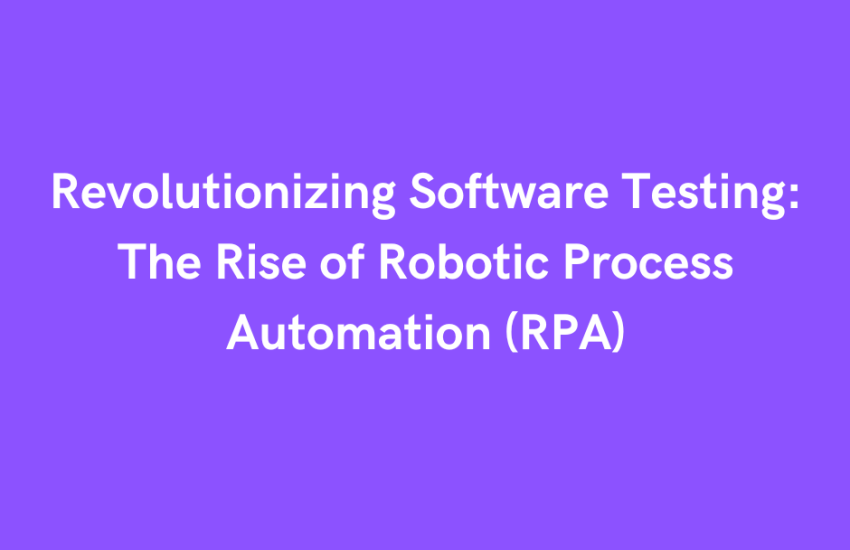In the dynamic realm of software testing, efficiency and speed are paramount. One of the groundbreaking trends reshaping the testing landscape is the integration of Robotic Process Automation (RPA). This post explores how RPA is becoming a game-changer in the world of software testing, automating repetitive tasks, enhancing accuracy, and enabling testing teams to focus on strategic aspects.
Understanding Robotic Process Automation (RPA):
Robotic Process Automation involves the use of software robots, or “bots,” to automate rule-based and repetitive tasks within a business process. Traditionally associated with business operations, RPA is now making waves in software testing, bringing a new level of efficiency to the testing life cycle.
The Role of RPA in Software Testing:
1. Test Case Execution:
RPA can streamline and accelerate test case execution. By automating repetitive steps, RPA bots can perform test scenarios more quickly and reliably than manual execution. This allows testing teams to focus on complex, creative, and exploratory aspects of testing.
2. Data Setup and Cleanup:
Setting up and cleaning up test data can be time-consuming and prone to errors when done manually. RPA can be employed to automate these data-related tasks, ensuring that test environments are consistently configured and ready for testing.
3. Regression Testing:
In the context of regression testing, where repetitive testing of previously executed test cases is essential, RPA can significantly reduce the testing time. Bots can quickly execute a large number of test cases, helping teams identify any unintended side effects of code changes.
4. Test Reporting and Documentation:
RPA tools can be utilized to automate the generation of test reports and documentation. This ensures that testing teams have accurate and up-to-date information, enhancing communication and collaboration within the development and testing teams.
5. Cross-Browser and Cross-Platform Testing:
RPA can be leveraged to automate cross-browser and cross-platform testing. Bots can simulate user interactions across various browsers and platforms, ensuring that software applications function seamlessly across different environments.
Benefits of RPA in Software Testing:
1. Increased Efficiency:
RPA eliminates the need for testers to perform repetitive and mundane tasks, allowing them to focus on more strategic and complex aspects of testing. This results in increased efficiency and a faster time-to-market for software products.
2. Improved Accuracy:
Bots execute test cases with precision and consistency, minimizing the risk of human errors. This leads to more accurate testing outcomes and helps in identifying genuine defects without the interference of manual errors.
3. Cost Savings:
Automating repetitive tasks through RPA can lead to cost savings for organizations. By reducing the time spent on manual testing efforts, teams can allocate resources more effectively, optimizing overall project costs.
Challenges and Considerations:
While RPA offers significant advantages, it’s essential to be mindful of potential challenges. These may include the need for skilled RPA developers, compatibility issues with certain applications, and the continuous monitoring of automated processes to ensure accuracy.
Conclusion
Robotic Process Automation is not just a buzzword; it’s a transformative force in the world of software testing. Embracing RPA can empower testing teams to be more efficient, accurate, and strategic in their approach, ultimately contributing to the delivery of high-quality software in today’s fast-paced development environments.




